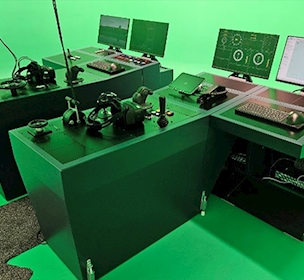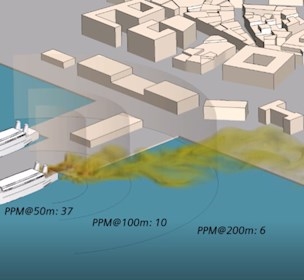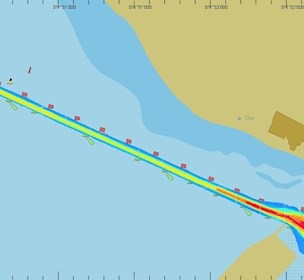Can you safely pass a grounded ship?
With ever larger vessels combined with shallow waters near shores, the risk of grounding when calling a port or navigating a channel is increasing.
The consequence of a grounding could be damage to the vessel, loss of cargo, pollution etc., and being out of operation, the vessel simply does not make money. On top of that, the vessel might be blocking a channel and thereby have a negative impact on the turnover of the port and the other ships operating in the port/channel.
The impact of a grounding
A grounding may have a great impact and raises a number of questions. If the grounding has happened in a channel, one of the questions might be if it is safe for other vessels to pass the grounded vessel? With a new simulator feature, we can address this question and thereby make it safer to pass a grounded vessel.
The new simulation feature is based on the physics of a grounded ship including simulation of grounding volume to be used for the calculation of the normal force and frictional forces as well as grounding area (between the bottom of the hull and the sea bed). The simulations can be used for technical studies, e.g. for salvage operators to determine how much tug power is needed to bring the ship afloat again, which strategy should be used etc.
Life goes on – even around a grounding
The salvage operators may also benefit from the input obtained from simulations of environmental impact such as swell, waves, wind, current and tide when they plan the salvage operation of the grounded ship or how to stabilize the grounded ship to minimize bottom damage etc.
Is it safe to pass?
In case of a ship grounded in an approach channel to a port, it is possible to investigate if another ship can pass the grounded ship safely. Such a passage initiates the physical phenomenon of ship-ship interaction which is critical as there will be suction between the two ships. Both the passing ship and the grounded ship will be affected by each other.
The passing ship will have a larger impact on the grounded ship than the other way around. It is important to remember that even when a ship is aground, it will still be able to move as it is not fixed in position. It can move due to for instance current, wind and waves as well as interaction with other vessels. This means that it will typically be able to yaw and heave in a swell without getting off the ground. However, if the tide is high enough, the ship could be lifted off the ground.
The port
For the port operator, the possible safe passage of a grounded ship in the approach channel could be of vital importance for the port operation. A blocked port approach channel will in most cases be devastating for the port and its operators.
Besides knowing how and when it is safe to pass the grounded ship, the port can develop emergency procedures for how to operate the port in case a ship is grounded in the approach channel.
Related services and facilities

SimFlex XR Full Mission Bridge simulator for training
/Service
Combining physical and virtual environments for cost-effective and immersive maritime training

Simulate green fuel leaks with CFD
/Service
Assess leakage risks, ATEX zones, ventilation and sensors with CFD.



